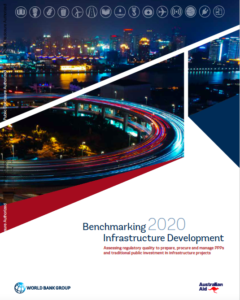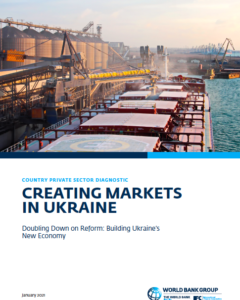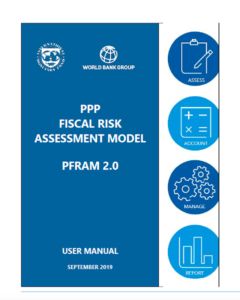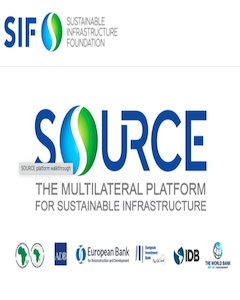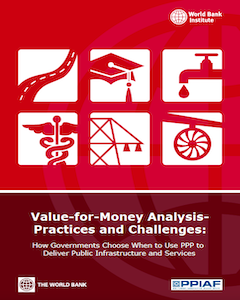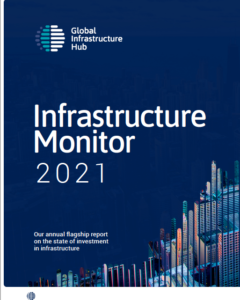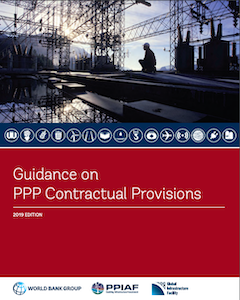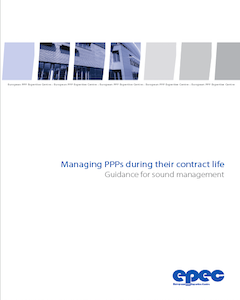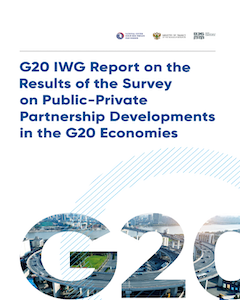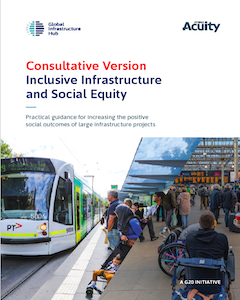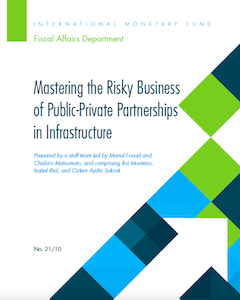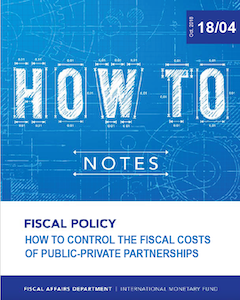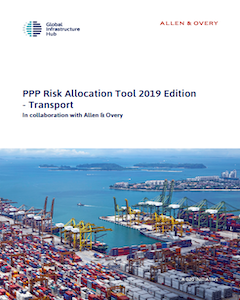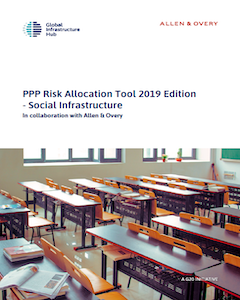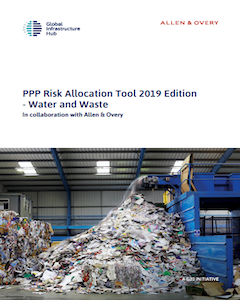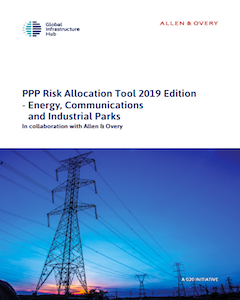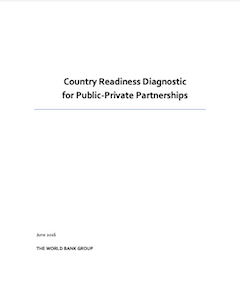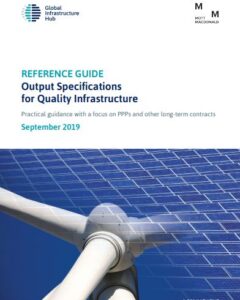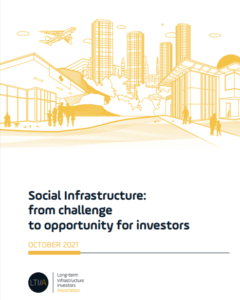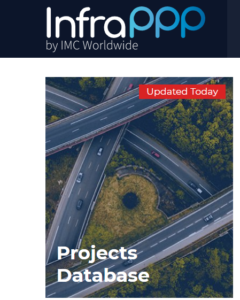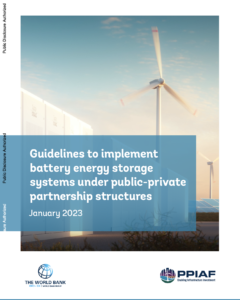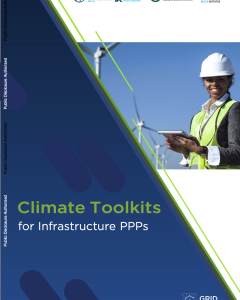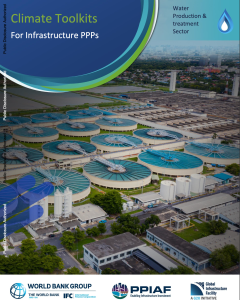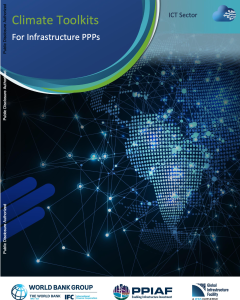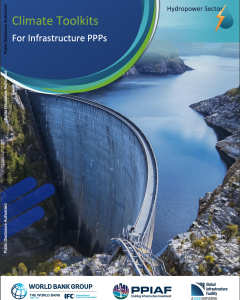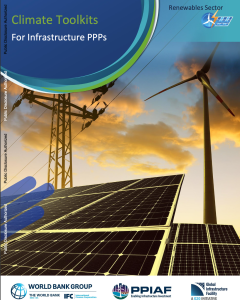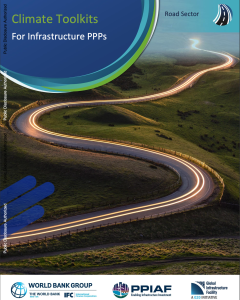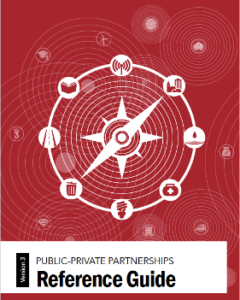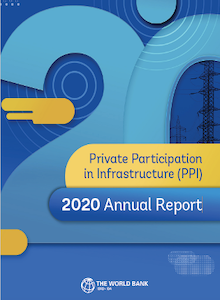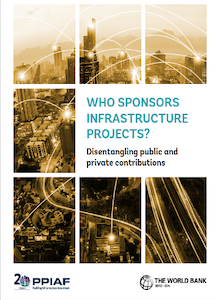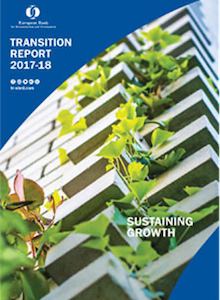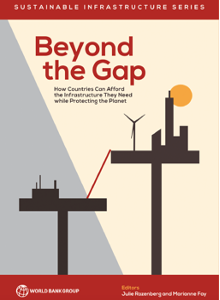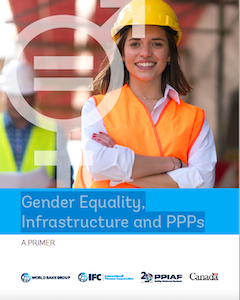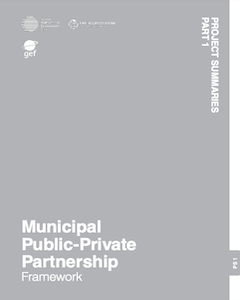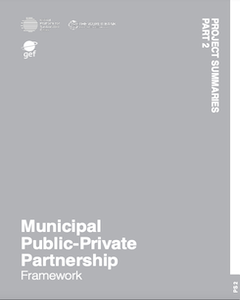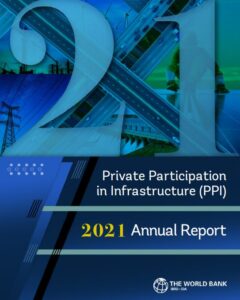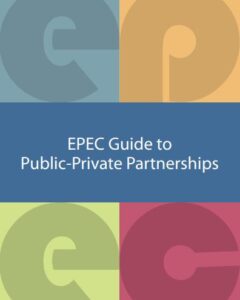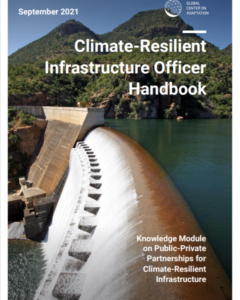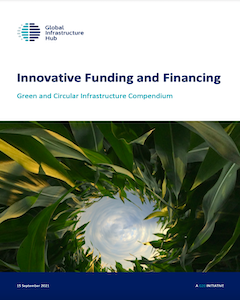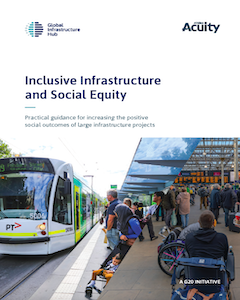Public-private partnership: features and benefits
Since 2017, Ukraine has been systematically working on sustainable development’ ensuring and the public-private partnership mechanism implementation in accordance with international best practices. The Government of Ukraine considers the PPP mechanism to be one of the main priorities for attracting investments in infrastructure development, both economic and social.
Confirmation of this can be found both in the State program for stimulating the economy to overcome the negative effects caused by restrictive measures to prevent the occurrence and spread of acute respiratory disease COVID-19 caused by coronavirus SARS-CoV-2 for 2020 – 2022 and in the new National Economic Strategy up to 2030.
Public-private Partnership (PPP) – is a long-term relationship between the state and private companies, in order to create, upgrade and further effective management of public assets and socially significant services traditionally provided by the state.
The main features of PPP are:
- longevity of relations (from 5 up to 50 years) based on the contract
- creation and/or development (development, significant upgrade, renovation, overhaul and technical re-equipment) of the public-private partnership asset and/or management (use, operation, maintenance) of the asset, potentially including related service management;
- significant management responsibility of the private partner; some of the risks are transfered to a private partner for a significant part of the asset life cycle, in addition to the transfer of risks associated with development;
- investment by a private partner in a public-private partnership asset: the private partner provides a significant portion of the financing, with the remuneration significantly linked to performance (availability and/or use) in order to reconcile the interests of both parties:
- attracting external funds allows the state partner to implement several projects at once and pay later
- participation in project financing encourages a private partner to
- reduce the cost of initial investment
- ensure the availability and proper operation/maintenance of the infrastructure
- optimize infrastructure life cycle cost management
All investment projects that meet the features of public-private partnership should be implemented only in accordance with the requirements of the Law of Ukraine “On Public-Private Partnership” (Part 3 of Article 1 of the Law).
A concession is a form of PPP. According to the Law of Ukraine “On Concession”, this form is used in cases when the state partner/grantor transfers to the concessionaire most of the operational risk, which includes demand risk and/or supply risk. In this case, the source of the majority of the concessionaire’s income are payments from users (consumers).
How to check whether a project is a PPP?
- The project meets the public policy priorities and Sustainable Development Goals of Ukraine for the period till 2030
- The project envisages the creation of new and/or significant upgrades, re-equipment of old assets, and/or the socially significant services provision
- The project envisages the use of a state and/or municipal property that is not leased and does not have a decision on privatization
- The project envisages a long-term relationship (5-50 years)
- The project provides mechanisms for return on investment to a private partner
- PPP will be the most effective mechanism for project implementation
PPP asset
— existing, in particular reproducible (through the significant upgrade, restoration, overhaul and technical re-equipment) objects that are in state or municipal ownership,
— created or newly developed objects in accordance with the agreement concluded within the PPP framework.
The transfer of a PPP asset to a private partner does not cause the transfer of this asset ownership to a private partner and does not terminate the right of state or municipal ownership of such asset.
Such assets are subject to return to the public partner after the termination of the relevant agreement. (parts 2, 3 of Article 7 of the Law of Ukraine “On Public-Private Partnership”)
Other common features of PPP
- a private company participant of the project can be created in the form of Special Purpose Vehicle (SPV)
- financing from the private partner’s side is performed usually in the form of “project financing”;
- the private partner receives income only (or mainly) when the asset is available;
- As there is the link of the private partner’s remuneration on performance the technical and service requirements are also focused on the results or output specifications, and not on the initial requirements. The requirements also leave room for innovation.
PPP benefits
The PPP projects implementation maintains the priority of the state partner to control a strategically important asset that creates incentives for the infrastructure operation in the interests of society, and in general:
- provides an opportunity to implement investment projects that are postponed due to lack of financing from the budget or for other reasons;
- increases the management efficiency in the relevant sector of the economy;
- ensures the world best practices introduction;
- promotes the quality and availability of socially significant services, bringing them in line with international standards;
- provides infrastructure’s rehabilitation, significant upgrade, and development;
- provides effective identification, assessment and transfer of risks and responsibilities to private partners for the entire period of long-term operation of the infrastructure asset;
- provides the attraction of long-term private financing, the capital mobilization and creates conditions for repeated attraction of the capital on infrastructure assets (according to life cycles and terms of their operation);
- provides constant additional revenues to the budgets of different levels, increases budget efficiency;
- provides all the benefits of project financing, including increase efficiency in terms of time, cost, volume and planning and management of the life cycle of the infrastructure rehabilitation and development project.
PPP project life cycle
The Government of Ukraine, through the Ministry of Economy, directs and ensures the standardization of the project preparation and implementation process through a transparent form of checks and balances in accordance with the procedures implemented in most partner countries.
The PPP project life cycle covers the stages from the identification and selection of PPP projects, the preparation of PPP implementation proposals, the tender to determine a private partner to the signing of the agreement and the further contract management during the PPP agreement term.
Project initiation options
Public partner initiative
– central, local executive bodies, local self-government bodies or authorities of the Autonomous Republic of Crimea, National Academy of Sciences, national branch academies of sciences, state, municipal enterprises, institutions, organizations, business associations, 100 percent of shares of which belong to the state, territorial community or the Autonomous Republic of Crimea (may involve international financial organizations and/or advisers).
Guide on how to handle a public partner initiative project
Unsolicited proposal
– entities that may be private partners under the Law of Ukraine “On Public-Private Partnership”
It is important to note that PPP projects are implemented only through the tender to determine a private partner for the project, regardless of the initiator of the project (Section IV of the Law of Ukraine “On Public-Private Partnership”).
by the initiative of a public partner
Stage 1
PPP projects Identification
The PPP project preparation process is usually preceded by the identification of priority investment projects, usually through project identification and selection. During this process, investment projects proposed by the public sector are screened for their potential as PPPs.
The PPP Agency identifies project ideas and initially assesses their compliance with PPP features, pre-evaluates the socio-economic impact on communities and the commercial component and attractiveness to potential investors, guided by evaluation criteria and guidelines for analyzing PPP project proposals developed jointly with International Finance Corporation (IFC) international consultants/experts in the framework of the Public-Private Infrastructure Advisory Facility (PPIAF) technical assistance project.
Stage 2
The PPP implementation proposal preparation initiator makes a decision on the initiation of the PPP project, identifies and appoints the responsible executors and / or creates an appropriate working group to ensure the preparation of the PPP implementation proposal (recommended).
Stage 3
PPP implementation proposal preparation
By the public partner initiative preparation of the PPP implementation proposal is performed in two stages:
At the first stage, the Concept Note is prepared and its detailed analysis is conducted.
The PPP implementation Concept Note is a document that contains the investment justification and assessment of the basic parameters of the PPP project that are necessary to decide on the expediency or inexpediency of further in-depth and detailed research and preparation of the PPP implementation Feasibility Study
The Concept Note content and procedure for preparing a is established by the resolution of the Cabinet of Ministers of April 11, 2011 №384.
The concept note analysis is conducted concerning:
- state property assets – the proposal preparation initiator taking into account positions of the Ministry of Economy, the Ministry of Finance and the central executive body which carries out according to the law functions on the management of the corresponding state property assets (in case such body is not the proposal preparation initiator) provided by them within 30 calendar days after receipt of the Concept Note;
- municipal property assets – the proposal preparation initiator and the executive committee of the village, settlement, city council or the executive staff of the district, regional council (if such a body is not the proposal preparation initiator).
Stage 4
Based on the results of the analysis, a decision is made on the expediency or inexpediency of the feasibility study preparation.
Stage 5
At the second stage of preparation of the PPP implementation proposal the Feasibility Study preparation is carried out.
The PPP implementation Feasibility Study is a set of calculation and analytical documents that contain the main technical and organizational solutions, assessments, estimates and other indicators that allow considering the feasibility and efficiency of the PPP project.
An integral part of the feasibility study is the PPP implementation financial model.
The Feasibility Study content and procedure for the preparation is established by the resolution of the Cabinet of Ministers of 11.04.2011 №384.
The PPP implementation initiator prepares a PPP implementation proposal, which consists of a Feasibility Study, and submits it to the body authorized to analyze the PPP implementation efficiency.
Advisors may be involved to prepare a PPP/concession implementation proposal and subsequently developing tender documents and conducting negotiations. Advisors are involved on a competitive basis in the manner prescribed by the resolution of the Cabinet of Ministers of 09.10.2020 №950.
Advisor’s involvement is mandatory if the value of the property that is the object of the concession exceeds UAH 250 million (Article 23 of the Law of Ukraine “On Concession”).
In case of Unsolicited Proposal, the process of initiating a project on the terms of PPP begins with the PPP implementation proposal preparation and submission by the private initiator, consisting of a Feasibility Study, to the body authorized to conduct PPP implementation efficiency analysis.
Stage 6
The PPP implementation efficiency analysis conducting procedure as well as the Conclusion on the Results of the Efficiency Analysis of content and procedure for preparing are determined by the resolution of the Cabinet of Ministers of 11.04.2011 №384.
The PPP implementation efficiency analysis is conducted concerning:
- state property assets – by a central or local executive body that performs, in accordance with the law, the functions of managing the relevant state property assets, and if such a body is not defined, – the Ministry of Economy,
- municipal property assets – the executive body of local self-government authorized by the relevant village, settlement, city, district or regional council, and if such a body is not defined – the executive committee of the village, settlement, city council or the executive staff of the district, regional council.
If several public partners participate in the PPP, they jointly conduct efficiency analysis in accordance with the Procedure. In this case, the state partners must form a joint commission to conduct efficiency analysis, which includes representatives of all public partners.
According to the results of the efficiency analysis, one of the following conclusions is prepared:
- decision making expediency on the PPP implementation, or;
- decision making inexpediency on the PPP implementation.
The conclusion concerning state property assets, and also concerning the municipal property assets and assets belonging to the Autonomous Republic of Crimea (in the case according to such conclusion state support by financing at the expense by the means of the state budget is provided), is sent together with the proposal in paper and electronic form for approval by the Ministry of Economy, except when the efficiency analysis is conducted by the specified Ministry. In this case, it is also mandatory to obtain the consent of the Ministry of Finance, which assesses the financial consequences that may arise during the PPP due to direct and indirect obligations of the state partner, determines the expediency and possibility of providing state support.
Stage 7
The conclusion is the basis for the decision on the PPP implementation expediency or inexpediency of its implementation. The conclusion is included in the tender documentation.
Stage 8
Tender
At this stage, the final structuring of the PPP project is carried out. This is especially true for the financial structure, payment mechanisms and risk allocation.
The tasks to be performed at this stage can be classified into two broad categories:
- structuring and drafting the tender terms and conditions, instructions for participants and applicants, including determination of qualification requirements and criteria, requirements to the tender proposal, evaluation criteria and other aspects;
- finalization of the agreement structure and the PPP agreement drafting. This task primarily includes the definition of technical requirements, determining the structure of risk distribution, financial and budgetary structuring, etc.
The public partner creates a tender commission, which determines the terms of the tender, in particular, the terms for preliminary selection (pre-qualification); develops tender documentation and submits it for approval to the public partner.
The tender documentation consists of:
- tender terms and conditions;
- conclusion based on the results of the PPP implementation efficiency analysis;
- instructions for applicants;
- instructions for participants;
- PPP agreement draft;
- other documents by the public partner’s decision.
The tender commission registers applications from participants; provides applicants and participants with the necessary information (documents) for the preparation and submission of applications and tender proposals; provides explanations to applicants or participants regarding the tender documentation; submits for approval to the state partner the decision on admission (non-admission) of applicants to participate in the competition; notifies applicants of admission (non-admission) to participate in the competition; carries out registration, consideration and evaluation of bids of participants; submits a protocol on the results of the tender (on determining the winner of the tender, on the rejection of all tender proposals without determining the winner or on announcing the tender as not having taken place) for approval by the state partner; informs the winner and other participants about the results of the competition; receives in the prescribed manner from public authorities, enterprises, institutions and organizations documents and other materials necessary to perform the tasks assigned to the commission; performs other tasks related to the organization and conduct of the tender.
The work of the tender commission with the right of the advisory vote on a competitive basis may involve independent experts – persons who have special knowledge in a particular field and can provide explanations, recommendations, consultations, conclusions on issues requiring such special knowledge during the tender. The procedure for competitive selection of independent experts is determined by the order of the Ministry of Economy of December 22, 2020, № 2721.
Stage 9
The tender process for the project is conducted by the tender commission in accordance with the Tender Procedure for determining a private partner for PPP for the state, municipal property and objects belonging to the Autonomous Republic of Crimea, defined by the Cabinet of Ministers of 11.04.2011 №384, or in accordance with the procedure established by the Law “On Concession” – for projects implemented on the terms of the concession.
Based on the results of the tender, the commission prepares a protocol on the results of the tender (on determining the winner of the tender, on the rejection of all tender proposals without determining the winner or on announcing the tender as not having taken place) and submits it to the public partner for approval.
In case of approval of the protocol and publication of information about the winner of the tender, the public partner invites the winner to negotiations on the PPP/concession agreement signing. It should be noted that when signing an agreement with the winner, it is prohibited to change the essential terms of the PPP/concession agreement, as well as the provisions that reflect the content of the tender proposal.
If the tender winner is a non-resident legal entity, it is obliged to form a resident legal entity to sign a PPP agreement.
Stage 10
The PPP/concession agreement is considered to be signed from the date of reaching an agreement on all its terms and signing the text of the agreement by the parties.
The public partner within three working days after the PPP/concession agreement signing sends by registered mail with a notice of delivery of a certified copy of such agreement (with all annexes to it) to the Ministry of Economy.
Contract management
The project implementation phase includes development and commissioning, operation and transfer.
The public partner/grantor performs the contract management and monitors the performance of the private partner/concessionaire.
The proper PPP/concession contract management should ensure that all parties to the agreement fulfil their respective obligations as efficiently as possible in order to consistently and effectively achieve the objectives set out in the agreement.
The PPP/concession contract management activities’ purpose is to obtain the services specified in the specifications of these agreements, achieve performance indicators, ensure the use of funds high efficiency (Value for Money; VfM) and proper management of distributed risks, as well as the settlement of any technical, legal, regulatory, environmental and social governance issues that may arise during the implementation of PPP/concession projects.
The PPP Certification Program Guide, referred to as the PPP Guide is the Body of Knowledge (BoK) on public-private partnerships (PPPs), will help public officials and their advisors implement efficient, sustainable PPPs. The PPP Guide is part of the family of CP3P credentials that, once mastered, enable PPP practitioners to achieve the title “Certified PPP Professional” under the auspices of the APMG PPP Certification Program. The APMG PPP Certification Program, referred to as the Certification Program is an innovation of the Asian Development Bank (ADB), the European Bank for Reconstruction and Development (EBRD), the Inter-American Development Bank (IDB), the Islamic Development Bank (IsDB), the Multilateral Investment Fund (MIF), the Public-Private Infrastructure Advisory Facility (PPIAF) and the World Bank Group (WBG).
In 2019, the UNECE has approved the concept of Putting People First in PPPs for Sustainable Development, including Guiding Principles on People-first PPPs for the UN SDGs. The People-first PPPs standard is crucial to directing PPP projects towards the fulfillment of global goals via infrastructure investment and the creation of “value for people” as opposed to a mere inflow of private funding. On May 25-27, 2022, at the fifteenth session of UNECE Committee on Innovation, Competitiveness and PPPs, a decision was made to change the name of the model to “PPPs for the SDGs”.
Environmental and Social Framework sets out the international financial organization’s commitment to sustainable development, through a Bank Policy and a set of Environmental and Social Standards that are designed to support Borrowers’ projects, with the aim of ending extreme poverty and promoting shared prosperity
The World Bank, IFC, PPIAF, EBRD, UNECE as well as other organizations, has developed a number of toolkits & benchmarking related to evaluating and creating public private infrastructure partnerships. These toolkits gather together checklists, guidelines and resources for different types of projects
The World Bank, IFC, PPIAF, EBRD, UNECE as well as other organizations, has developed a number of toolkits & benchmarking related to evaluating and creating public private infrastructure partnerships. These toolkits gather together checklists, guidelines and resources for different types of projects
